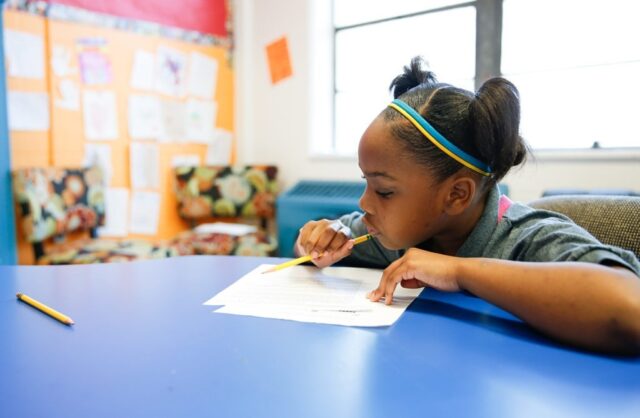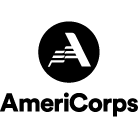Advancing educational equity with the Network for School Improvement during COVID-19
City Year’s impact on schools through learning networks
Schools taking part in the Network for School Improvement (NSI) received additional supports from City Year to help them prioritize students’ well-being and respond to a challenging educational landscape after the pandemic triggered school closures in spring 2020.

Paola Deliz Félix Encarnación, vice president of the National NSI at City Year, discusses how the network adapted during COVID-19; its focus on educational equity; and its plans to address the needs of students returning to school this fall. Schools in the NSI work together and one-on-one with City Year to tackle shared problems and strengthen school outcomes for eighth graders who are Black, Latinx or whose families have experienced poverty. After beginning with a small cohort of schools in Milwaukee, City Year’s NSI has grown to 10 schools there, while expanding to Tulsa and additional cities to help educators share and implement promising practices.
City Year: How did the network adjust to distance learning and how did that tie into equity?
Paola Deliz Félix Encarnación: All the schools cared a lot about how to engage students in the virtual world and not have students or teachers burn out. They were thinking about what to do when eighth graders didn’t show up to online class. School leaders had to find out if those students had access to the internet, a computer and a space at home where they could be an engaged student. When students did log into their online classes, one question we grappled with was whether it mattered if students were on camera or not.
We also started thinking about how equity played a role in what we expected from students; maybe a student didn’t want their classmates to see that their bed was on the floor, which is why they kept their camera off. It didn’t mean that the student didn’t care about school—it meant they didn’t want everyone to see their learning environment. There are cases where a student is also an older sibling who doesn’t take part in class at times because they’re making sure that their younger siblings are doing their schoolwork. Conversations started about how students would be able to engage in this new virtual environment.
CY: What type of changes did schools put in place?
PDFE: Many types of interventions bubbled up about engagement and about adult behavior, including what types of assignments were given to students and how they’re graded, and whether students have someone they can talk to.
In one of our schools, students in a classroom decided on the criteria for what it meant to be engaged in class, which is information that can help schools ask themselves what they can do better next time. Some schools created ‘student champions’ assigned to every single student that wasn’t engaging with school. After a student logged in, they’d go to a separate room with their champion just to see how they were doing.
Ideas related to student engagement and adult behavior continued to surface throughout the year, even when schools moved back into in-person learning. Educators also needed support to engage students in virtual spaces, like how to translate their expertise in managing a pre-pandemic classroom into the virtual world.
CY: What steps did the NSI take in Milwaukee to adapt in spring and summer 2020 in the more immediate aftermath of school closures?
PDFE: Shutting down so abruptly in 2020 meant that schools didn’t know how to celebrate all the eighth graders who were completing the grade at the end of the school year. We thought about how we could support creative ways to do that. Some schools organized parades, others sent dinners to families to celebrate; families received congratulatory signs for their front yards.
Meanwhile, we also compiled resources for teachers and for parents in English, Spanish and Hmong, which is one of the largest populations that we serve here in Milwaukee, to help them support their students and understand how the school district was responding to closures.
That summer, we convened the NSI for a back-to-school session to think about what resources or research-driven practices schools could implement in the middle of COVID-19. That was followed by what we call ‘Strong Start,’ which was a series of asynchronous and synchronous learning experiences for educators and school leaders to launch back into our NSI work.
CY: Prior to the pandemic, the NSI brought together education leaders in person for group learning sessions. How did you adjust?
PDFE: An all-day learning session with activities, presentations and opportunities to laugh with your colleagues wasn’t possible in a virtual space. We pared back our sessions, though they were still spaces where schools shared what they were doing, got feedback and talked about things that were affecting them. We also increased our support by meeting with them a little bit more often and checking in with them to make sure that they felt connected.
Another shift this year was that we started to build an understanding of what we mean by equity, and we worked with schools over five to six weeks, depending on the location. In Milwaukee, we asked NSI participants to listen to a podcast about the history of education in the city and to write down their thoughts. We have those quotes, which are amazing for us to read, about what they believe and how we all believe in the power of young people, and the factors at play that don’t make it as easy for them to have access to education in the way that they should.
In Tulsa, schools looked at the students we serve and the many identities they represent while participating in a similar discussion format.
CY: The NSI’s work in Tulsa was just starting to take off. What was that like in a pandemic environment?
PDFE: Tulsa explored continuous improvement, focusing on attendance and student engagement. We decided the best route was for schools simply to try implementing an idea and monitoring it, because it’s so difficult to launch new work in the middle of a pandemic.
One school in Tulsa started NSI student groups, where students are looking at data and making decisions for how their NSI adult teams would work. Schools really leaned into this idea of belonging and helping students feel like they matter in their school and really caring about student voice. Our questions centered mostly on how teams felt prior to implementing something, and what their thoughts are looking back on it once it’s in place. The conversation was gravitating in that direction, as opposed to schools trying out a bunch of different measures.
There was a lot of exploration and a lot of asking students about what they thought. Schools gathered a lot of data from focus groups made up of the people that they’re serving. Together, we’re really going to be leaning into studying what we learned and what that means for next year, and how we can move forward with the data related to students that we gathered this year.
CY: How are you thinking about next steps in Milwaukee?
PDFE: Milwaukee is starting to think a bit more about academic outcomes, now that they’ve thought about how to make school feel inclusive for students, and what students want, as well as about the impact of adult behaviors on the learning environment. They’re really thinking about how to move the needle on academic outcomes now that those environments are a bit better, specifically around math and English Language Arts.
Adult behavior in school spaces is going to continue to be important, as is how we get resources to teachers, including professional development, coaching and supports. We’ve done a ton of work in terms of student voice, but we don’t often think about teacher voice. Do we think about what teachers have the ability to do? What skills do teachers still need and want? The pandemic and the transition to a virtual world made it very clear that we all need help, support and resources. I don’t think that idea is going away.
Related stories
Over the last few months, City Year Memphis and their local Starbucks partners—along with several other community organizations, businesses and...
Read more about Creating hope and opportunity in Memphis through partnershipsIn recognition of Financial Literacy Month, City Year AmeriCorps members are exploring the importance of financial literacy for young people’s...
Read more about Understanding the importance of equitable access to financial literacyIf you speak with an HBCU alum about their experience, you’ll quickly learn that service to the community is one...
Read more about Diversity, leadership and community: reflections of an HBCU alumDo you know about the vibrant city of Kansas City and the incredible opportunities it offers to City Year AmeriCorps...
Read more about Seven reasons to serve with City Year Kansas City















